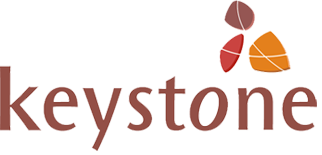Something worth pushing in preparations for next year’s World Humanitarian Summit is a shift from the current ad hoc approach to designing accountability systems in emergencies to a standard whole-of-program model that spells out what needs to be done and provides a robust delivery vehicle.
Providing this kind of support at the overarching program level complements the work of individual agencies and sectoral clusters as they get their act together on accountability to affected people, prodded by growing pressure from donors and verification of the new Core Humanitarian Standard.
A standard approach would go a long way towards simplifying things for harried humanitarian managers. Take Toby Lanzer, UN humanitarian coordinator for South Sudan. In a recent webinar, he described how he urges agencies to become more accountable without really grasping what exactly he is encouraging them to do.
Lanzer is not alone in grappling with this challenge. It happens in every emergency. In Nepal, the post earthquake Flash Appeal, which sets out the plan of action, includes a call for resources for communication and feedback. This is a first, and the UN OCHA team did an impressive job of pulling together on the fly a comprehensive approach in the form of a Common Feedback Platform—with input from members of the CDAC Network. But then it was over to donor staff who took another 3 weeks to sift through the plan before deciding which tools they considered most relevant and what configuration of players to fund.
The arrangements that eventually emerged in Nepal, funded mainly by DfID, are sound. BBC Media Action is doing outward communication to people across the worst hit districts with carefully researched radio broadcasts. Accountability Labs (AL) and the Local Interventions Group (LIG), two Nepalese civil society organizations, are running a mobile help desk, with volunteers who go village to village to provide information and listen. Ground Truth Solutions, with AL and LIG support, is doing fortnightly micro-surveys of both citizens and frontline workers, keeping tabs on perceptions of how the recovery program is going. ACAPS, meanwhile, is analyzing the overall situation each week as well as trying to harness input from social media. There is logic to the line-up but it is not a ‘hard team’ in the sense of a group implementing a plan from the accountability playbook and knowing, instinctively, how to work together.
A breakthrough in the Haiyan response in 2014 was the appointment of an accountability focal point. Having this kind of expertise at the right hand of the UN humanitarian coordinator is certainly a step forward in developing a program-wide approach. But if accountability to affected people is to become a reality outside the coordination room, every humanitarian country team must be able to draw on a tested industry standard and people with the skills and experience to deliver it.
There’s no hard and fast blueprint. How the model is implemented and the composition of the team may vary in light of circumstances and specific challenges. At its core must be a simple and continuous way of surfacing affected people’s views with

Nick van Praag
the credibility to get program managers’ attention and drive changes on the ground. Capacity to provide information about what affected people can expect from relief providers is a must. The same goes for the ability to use a range of communications technologies and channels. Skill in soliciting and responding to grievances may also make sense. Creating the right mix of rapidly deployable capacity would help fill what is now an accountability gap in emergency operations.
Nick van Praag directs Ground Truth Solutions which is supported by the Swiss Agency for Development and Cooperation, the IKEA Foundation and DFID.

